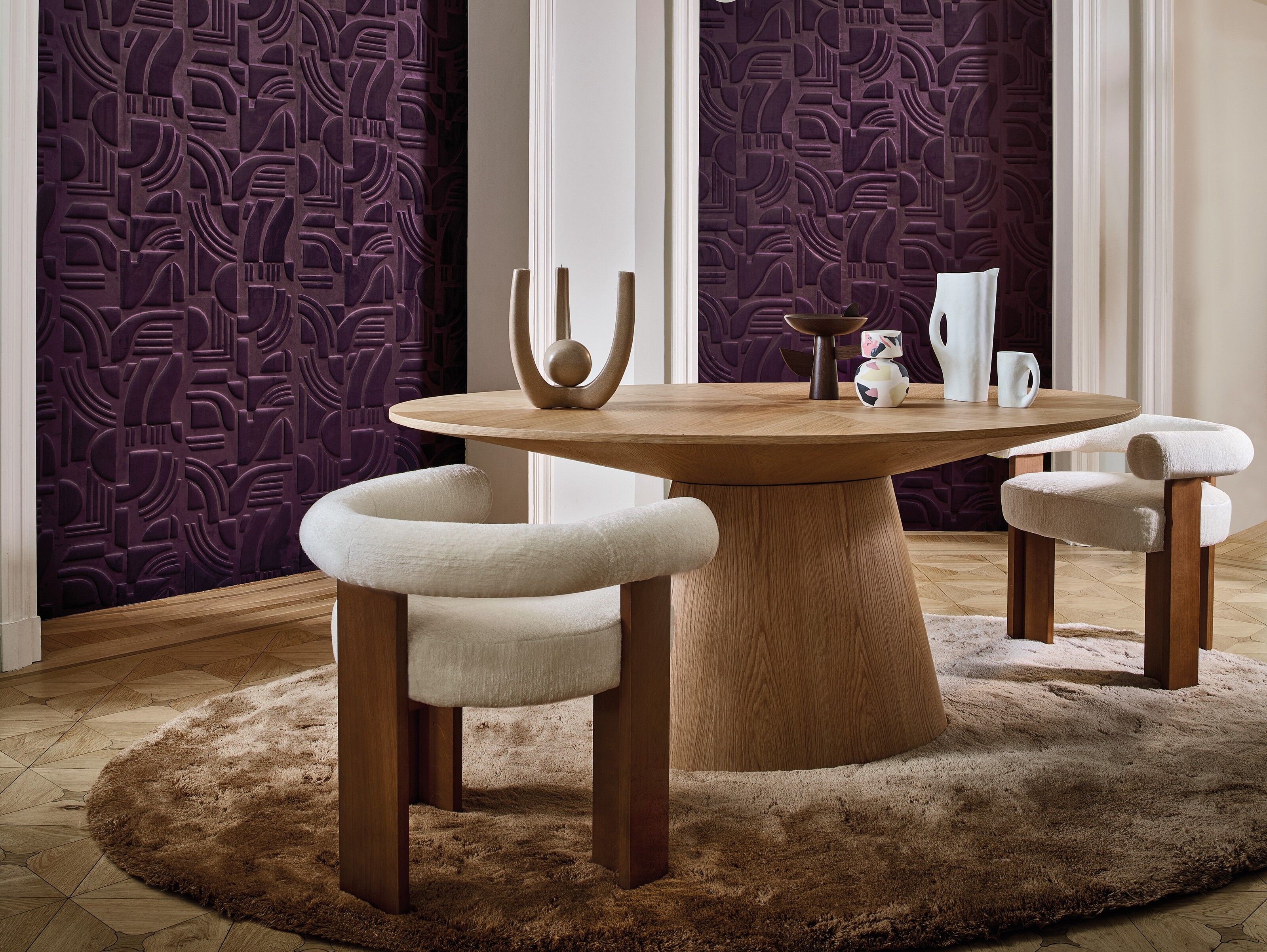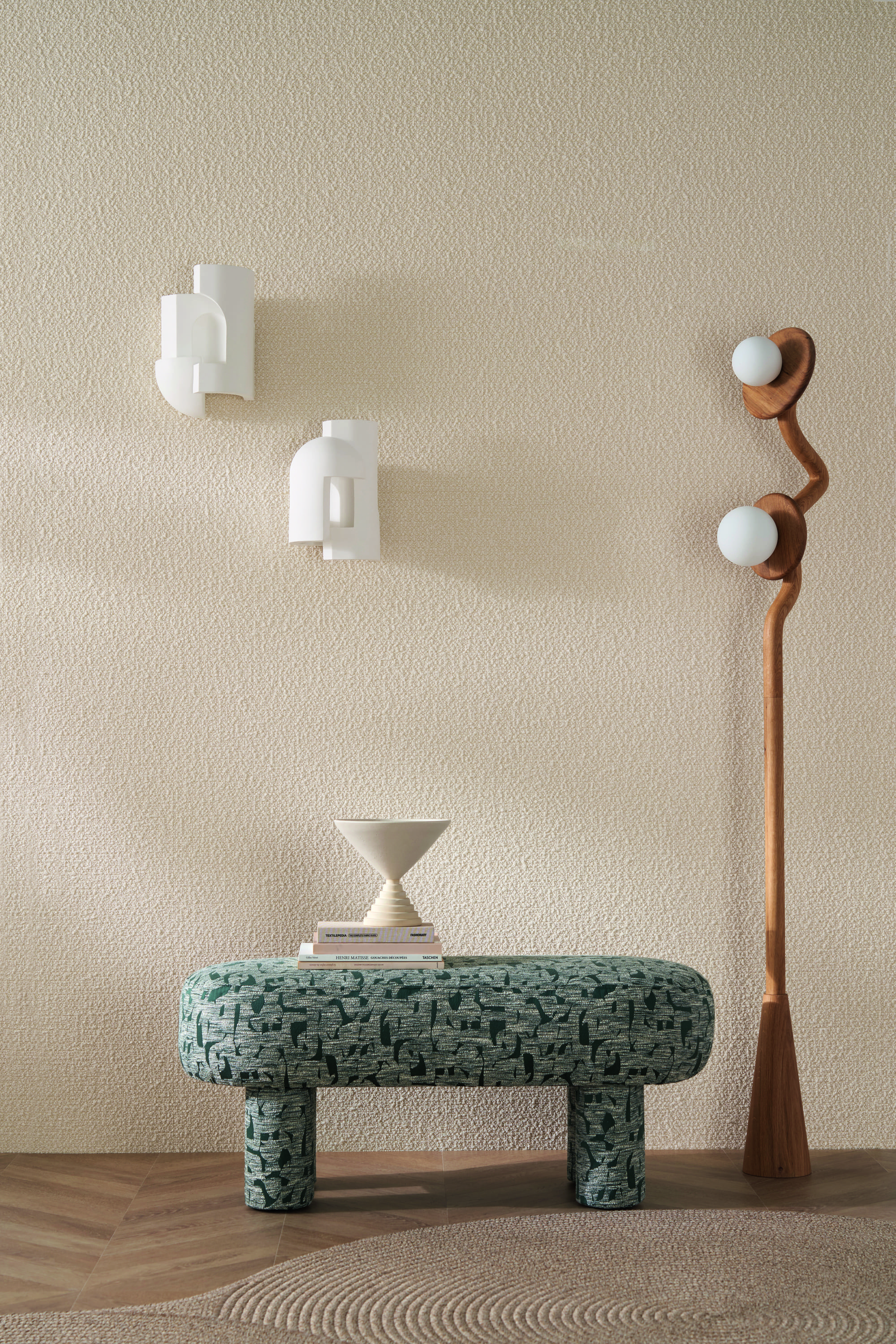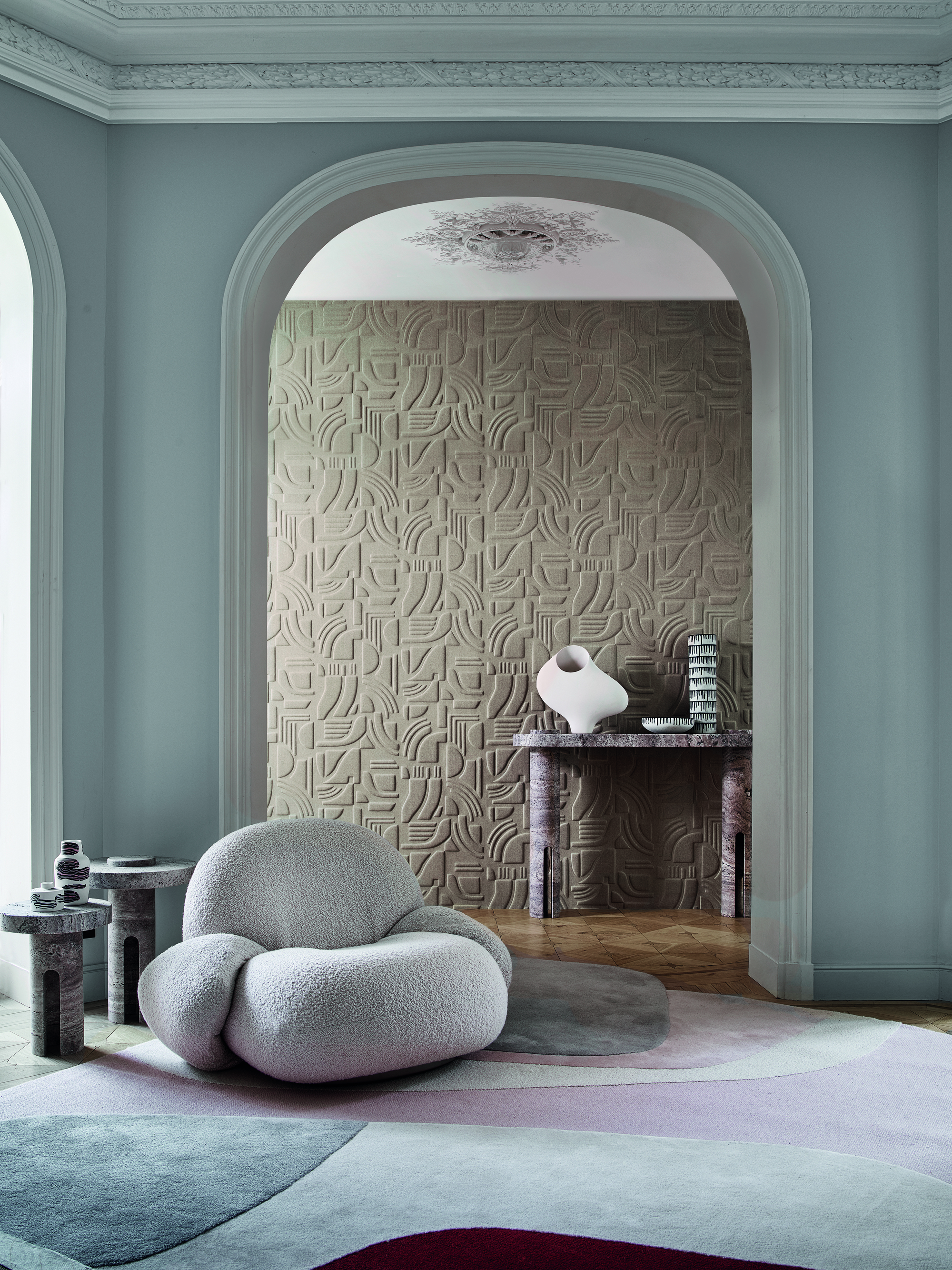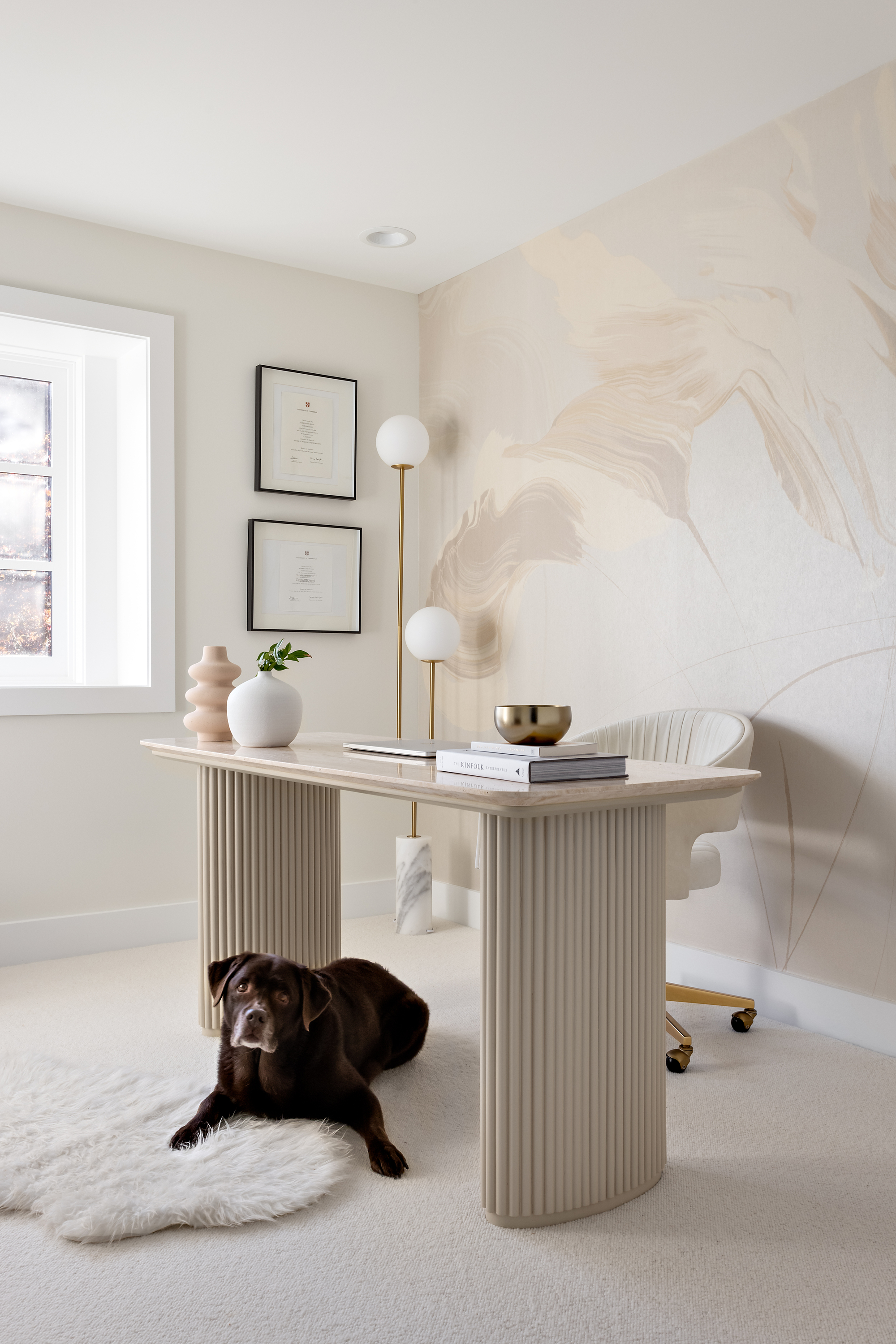
2023 witnessed a surge of textured wallcoverings, as some of our favorite wallpaper brands and interior designers experimented with unique materials and fabrics to clad walls with. We've seen high-textured wallcoverings coming to the fore as an interesting alternative to wallpaper, bringing depth, dimension, interest and warmth, and it's part of a wider trend for added texture in the home. 'Textured wallcoverings are revolutionizing the world of interior design, offering a tactile and visually appealing alternative to traditional flat walls,' agrees Stefan Theunis from Omexco. 'With a wide range of textures to choose from, homeowners can create spaces that are both stylish and unique.'
For Phyllis Lui, principal at Kalu Interiors, wallcoverings provide a more luxe feel to a space. 'Wallpaper is typically flat, but proper planning with wallcoverings can create spaces that are unique and special.' We've spoken to the interior designers to get to grips with the wallcovering interior design trend and find out what types we should be keeping an eye out for in 2024.
1. Wood marquetry

In the world of new and exciting wallcoverings, wood marquetry is a style that captures the wider 1970s aesthetic, incorporating variations of brown hues and bringing unique pattern to walls.
'I think we’ll be seeing an embrace of traditional methods and artistry, mainly in plaster and wood marquetry,' says Kevin Dumais of Dumais Interiors. 'Both add texture to a space without wallpaper that feels incredibly contemporary and luxurious when deftly used.'
The new Imperialis Collection by Omexco (above) is one such example of wood marquetry wallcoverings, and is a statement to the art of marquetry that incorporates geometric shapes, bold lines, and sumptuous symmetry.
The collection is made of paulownia wood which is meticulously placed against a gilded backdrop and the natural grain and texture of the wood veneer are displayed in all their glory.
2. Natural materials

Natural materials on the walls are nothing new, but we're seeing a resurfence of the use of sisal, jute, grasscloth and other natural fibers on the walls. The French fabric and wallpaper house, Casamance, is a brand working hard on the diversification of textures, exploring the beauty of fibres and the technicality of the materials to create wallcoverings with a rich feel, ultra-stylish, and delicately natural.
The collection by Casamanece set to launch this year showcases an exceptional tribute to natural plant fibers inspired by Japanese culture, revealing the beauty of sisal and woven paper, with an artisanal look and refined embroideries. The look is modern yet in keeping with the brand's aesthetic.
Mark Alexander is another name also experimenting with natural wallcoverings 'They are increasing in popularity,' says the head of the brand, Mark Butcher. 'Through our Collage III range, each wallcovering is crafted from natural materials such as raffia, sisal, abaca, and banana bark using artisanal techniques. What we try to create at Mark Alexander, through texture and design clarity, are wall coverings that can form an intrinsic part of the architectural space not just a decorative layer.'
Color-wise, these natural materials lend themselves to a neutral color scheme. 'Neutrals (tone-on-tone patterns) will continue to be huge because they do not require too much commitment and will still add great interest to a space,' says Phyllis.
This example from Pierre Frey's Soleil Levant collection epitomizes the technological advancements of natural wallcoverings, going against the grain of neutral colors with a shock of bold blue made from natural fibers.
3. Bouclé

Yes, I had the same reaction - bouclé on the walls? But having seen this material in person and felt how much texture and depth it brings to a room, I can honestly vouch for it.
While we have been reporting on bouclé's demise as a form of upholstery, we're enjoying the wallcovering look for a fresh take on this much-loved material. Casamance's Etreinte collection consists of a bouclette for the walls with an opulent texture design and 12 colors to pick from. From the classic bouclé cream (pictured) to a more vibrant purple, the bouclé ranges from the classic to the contemporary.
'The incredible softness of the bouclette wraps you in a serene sanctuary,' says Nathalie Ducoulombier of Casamance. 'It covers the walls using contemporary shades and lovely texture, plain or subtly blended: like a haven far from the outside world.'
4. Velvet

Another wall covering making waves from Casamance is a unique 3D texture characterized by velvet or linen shapes, delicately embossed or embroidered. Inspired by geometric and organic shapes, the Arcane design is a three-dimensional composition that brings real texture to a living room and makes a statement on the walls.
Its remarkable design comes from the foam backing covered in smooth velvet, allowing the shapes to stand out visually and even giving noise-insulating properties. The Arcane collection is available in five colors: beige, celadon, empire green, amber, and a deep aubergine.
6. Metallic

While not a texture, the subtle sheen of a metallic wallcovering is another style that is gaining traction. 'Metallic and pearlescent backgrounds on wallcoverings will also continue to the popular as they elevate an otherwise plain backdrop to something more unique and special,' says Phyllis Lui, principal at Kalu Interiors.
For those who are not willing to commit to a mural, just doing a plainer wallcovering with a pearlescent finish is enough to add something subtle and interesting to the wall. It also would provide the perfect scene for layering art on top.
In this instance of this home office designed by Kalu Interiors, an elegant Emma Hayes wallcovering provides the perfect backdrop and focal point to the room. 'Because it is a subtle floral pattern that is on a similar tonal background, it does not overpower the space and creates an understated and refined feel to it,' says Phyllis. 'It has a pearlescent background which makes it stand out more than just a plain painted wall and shimmers with the lighting coming into the room.'






